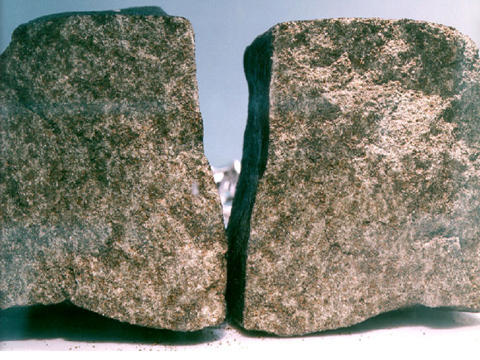Meteorites reveal two distinctly different tales of Mars.
On Earth, a rich collection of Martian soil samples has actually been gathered, and they didn't need to be delivered: they arrived on their own. These are meteorites—fragments of Martian rock that broke off from the Red Planet when asteroids struck it. For some time, these stones, ejected into space by a powerful impact, wandered through the interplanetary space before being drawn to Earth.
Science knows of several hundred such Martian fragments that have fallen to our planet. Their Martian origin is identified by the same unique ratios of isotopes of various chemical elements, which are present both in these meteorites and in the Martian environment, already well-studied through spacecraft missions.
Geologists can determine how, when, under what circumstances, and in what conditions a particular rock was formed by examining its structure and composition. For them, rocks are historical documents, and Martian rocks provide a glimpse into the past of another planet. Overall, scientists have concluded that everything began as one might expect: shortly after Mars formed a little over four and a half billion years ago, the planet began to cool gradually, and its initially mixed material separated into a core, mantle, and crust. However, when exactly this occurred and what happened next remains somewhat unclear.
Cosmochemists from the Lawrence Livermore National Laboratory (USA) shared their uncertainties regarding this in an article for the journal Proceedings of the National Academy of Sciences. They sought to clarify the evolution of Mars through three types of meteorites that make up 95 percent of all known Martian meteorites: shergottites, nakhlites, and chassignites. All of these were named after the very first discovered sample of their type. The Shergott meteorite fell near its namesake location in India in 1865. The Nakhla meteorite was found in Egypt in 1911. Interestingly, it was the first meteorite recognized as having Martian origins. The Chassigny meteorite fell in France in 1815.
Researchers explained that shergottites are basaltic rocks, while the other two types are cumulate rocks. Essentially, they are the same material, "prepared" differently. Basalts are formed from magma that cools quickly. However, there are times when it cools slowly and gradually. In such cases, one substance crystallizes and settles out first, then another crystallizes and settles on top, and so on. This results in a layered rock, which is referred to as cumulate.

In all these Martian rocks, very distinct isotopic ratios of different elements can be traced, revealing not just the conditions at the time of rock formation, but also the circumstances leading up to it. However, the picture drawn from shergottites is different from that derived from nakhlites and chassignites.
According to the basalts, it seems that after the initial formation of its primary internal structure around four and a half billion years ago, Mars largely settled down, and for billions of years, there was neither mixing of the mantle nor plate movements—almost complete geological silence prevailed. In contrast, the cumulate Martian meteorites consist of such raw materials that could not have formed in "silence" and indicate a clear, prolonged geological activity on Mars. As scientists say, shergottites make Mars more akin to the Moon, while the other meteorites resemble Earth.
Researchers hope that the Perseverance rover will help resolve this debate: as it moves through the Jezero crater, it has already filled over two dozen capsules with soil, and NASA is currently working on the problem of bringing them back to Earth. Meanwhile, planetary scientists are carefully examining images sent back by the rover, and based on the appearance of some of the drilled rocks, they suspect them to have a magmatic origin.